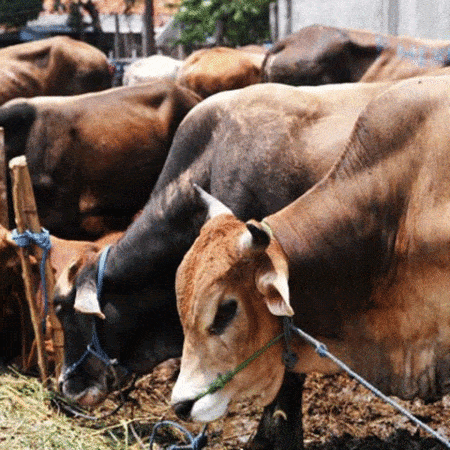
Pakistan Institute of Development Economics
- Home
Our Portals
MenuMenuMenuMenuMenuMenuMenu - ResearchMenuMenuMenuMenuMenuMenuMenu
- Discourse
- The PDR
- Our Researchers
- Academics
- Degree Verification
- Thesis Portal
- Our Portals

Milk Production in Pakistan
Over 750 million people are engaged in milk production around the world, mostly smallholders fulfilling their livelihood needs, food security and nutrition. World milk production was 522 million tonnes in 1987 while it escalated to 828 million tonnes in 2017 and augmented to 838 million tonnes having the share (82% cow milk, 14% buffalo milk, 2% goat milk,1% sheep and 0.3% camel milk) in 2018 [FAO,2019]. Milk production in developing countries of South Asia jumped after 1970, and the region has become a key player in world milk production. The region consisted of 745 million dairy animals that accounted for 21% of dairy animals in the world. The region was also home to 25% of cattle and buffaloes, 15% of sheep and goats, and 7% of camels in the world. Currently it is contributing about 200 million tonnes of milk that accounts around 20% of global milk production despite low milk yield of the dairy animals [Siddiqui, 2017].
In Pakistan, livestock plays an important role and grew at a rate of 4% in 2018-19, accounting for about 60.5% of agriculture value added and 11.2% of GDP. The importance of the sector can be realized from the fact that it is not only a source of foreign exchange earnings, but also a source of income for over 8 million rural families. Within the livestock sector, milk is the largest single commodity. Overtime, the higher growth in the livestock sector was mainly attributed to milk production [Economic Survey of Pakistan 2018-19].
Pakistan is the 4th largest milk producing country in the world. Approximately 80% milk is produced at small scale in rural areas ,15% peri- urban and 5% in the urban areas. Average annual milk production during 1960s and 1970s was 6.6 million tonnes and 8.1 million tonnes respectively. This increased from 12 million tonnes (1985-86), to 48 million tonnes in 2018-19, a qaudrupling in three decades.
Milk composition has also changed between 1985-86 with a marginal increase in cow milk and reduction in buffalo milk (67% buffalo, 31% cow and 2% goat, sheep and camel in 1985-86, to 60% buffalo, 36% cow and 4% goat, sheep and camel in 2018-19. About 97% milk is marketed in raw form and rest is processed (UHT), with 15 to 20% wastage in some areas.
Average household holdings are 2-3 cattle/buffaloes and 3-4 sheep/goats per family which help them to earn around 35-40 percent of their income [Economic Survey of Pakistan 2006-07] in Pakistan. Moreover 84% of households have a herd size of 1-4 animals while 14% have 10 and only 2% have more than 10. In terms of sheer quantity, the number of buffaloes, cows and goats has risen three times whereas the number of sheep and camel has doubled.
| (millions) | ||
| Livestock | 1985-86 | 2018-19 |
| Total | 88 | 196 |
| Buffalo | 16 | 40 |
| Cow | 17 | 48 |
| Goat | 31 | 76 |
| Sheep | 23 | 31 |
| Camel | 0.9 | 1.1 |
The province Punjab has the largest buffalo population, with 64 percent of the total, followed by Sindh with 26 percent, Khyber Pakhtunkhwa (KPK) with 7 percent, and Baluchistan with only 1.2 percent. Punjab also has the largest cattle population, with 48 percent of the total, followed by Sindh with 23 percent, KPK with 20 percent, and Baluchistan with 7 percent [Livestock census report (2006)]. The Punjab and Sindh are the major milk producing provinces, with annual production of 25.62 million and 9.35 million liters respectively. KPK produces an estimated 4.88 million liters per year, and Baluchistan 0.81 million liters (PDDC, 2006). Provincially, annual per capita consumption is highest in Sindh, at 246 kg. In Punjab it is about 132 kg, in KPK about 86 kg, and in Baluchistan about 108 kg. The average milk yield of the cow and buffalo is 14 and10 liters per day respectively. It is still 5-6 times less than the developed world.
The average cow is productive for about 8 years, whereas a buffalo is productive for about 9 years. It worth noting that eight Pakistani milking animals producing milk is equal to one milking animal of the developed world. Average per capita milk availability (PCMA) during 1970’s and 1980’s, was 56 kg and 55 kg, respectively. It rose to 70 kg per annum during 1990’s and was 100 kg/annum in 2017-18.
During the last three decades, per capita milk availability has risen almost three times in Pakistan. Imports of milk and milking products were Rs.0.3 billion in 1975-76, which rose to Rs.1.4 billion in 1990-91 and Rs.3 billion in 2007-08 while Rs.20 billion in 2017-18. Thus, the question is that despite being the 4th largest milk producing country, why are we spending Rs.20 billion per year on the import of milk and milk products?
Download full PDF


